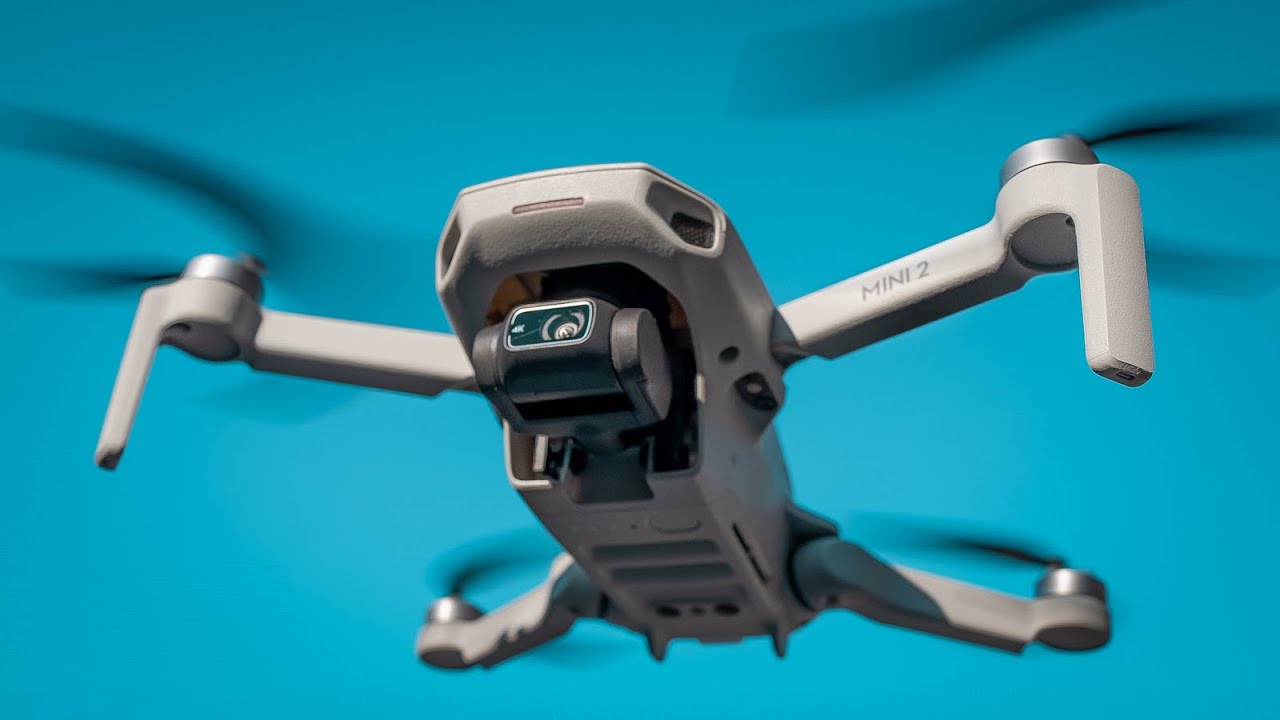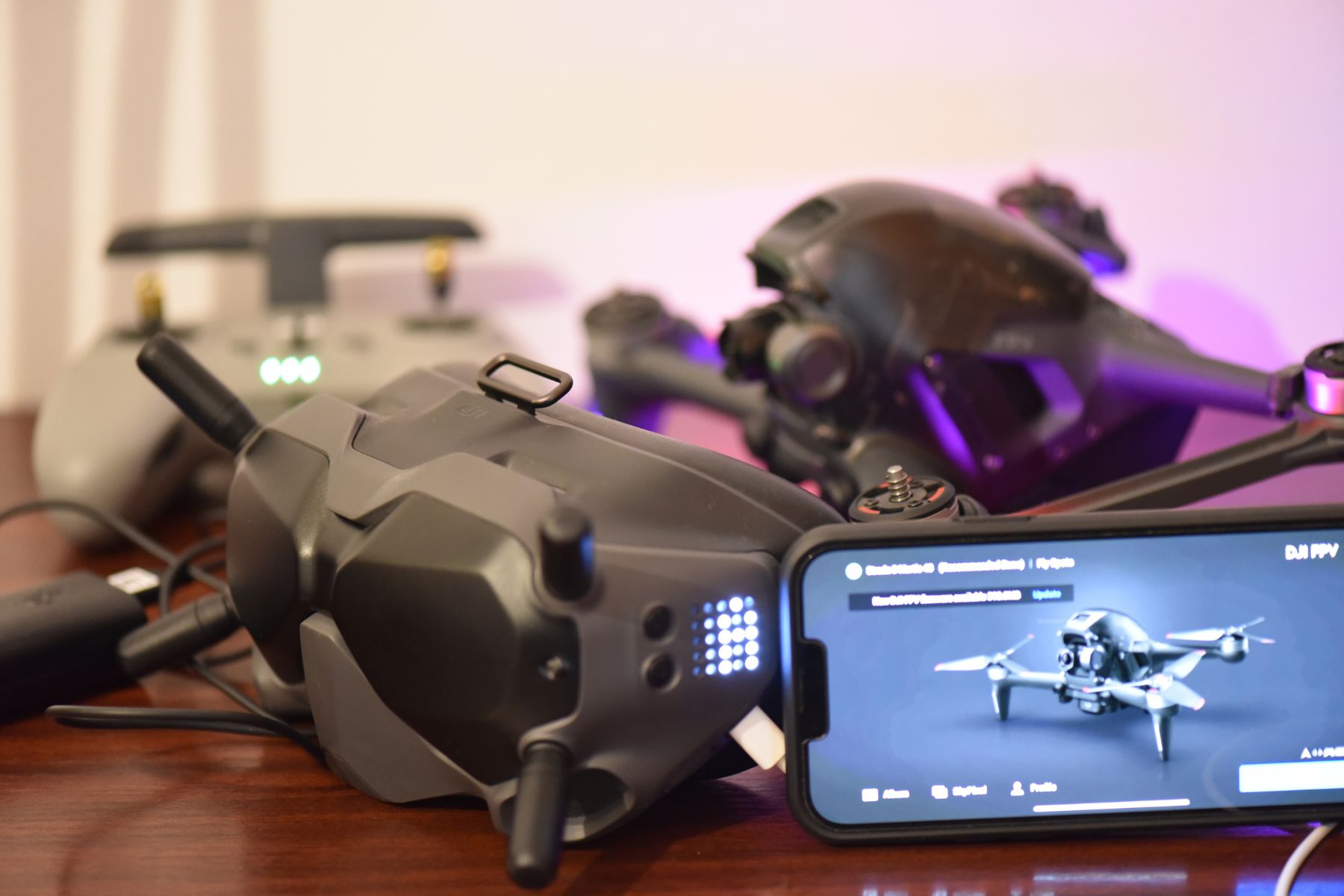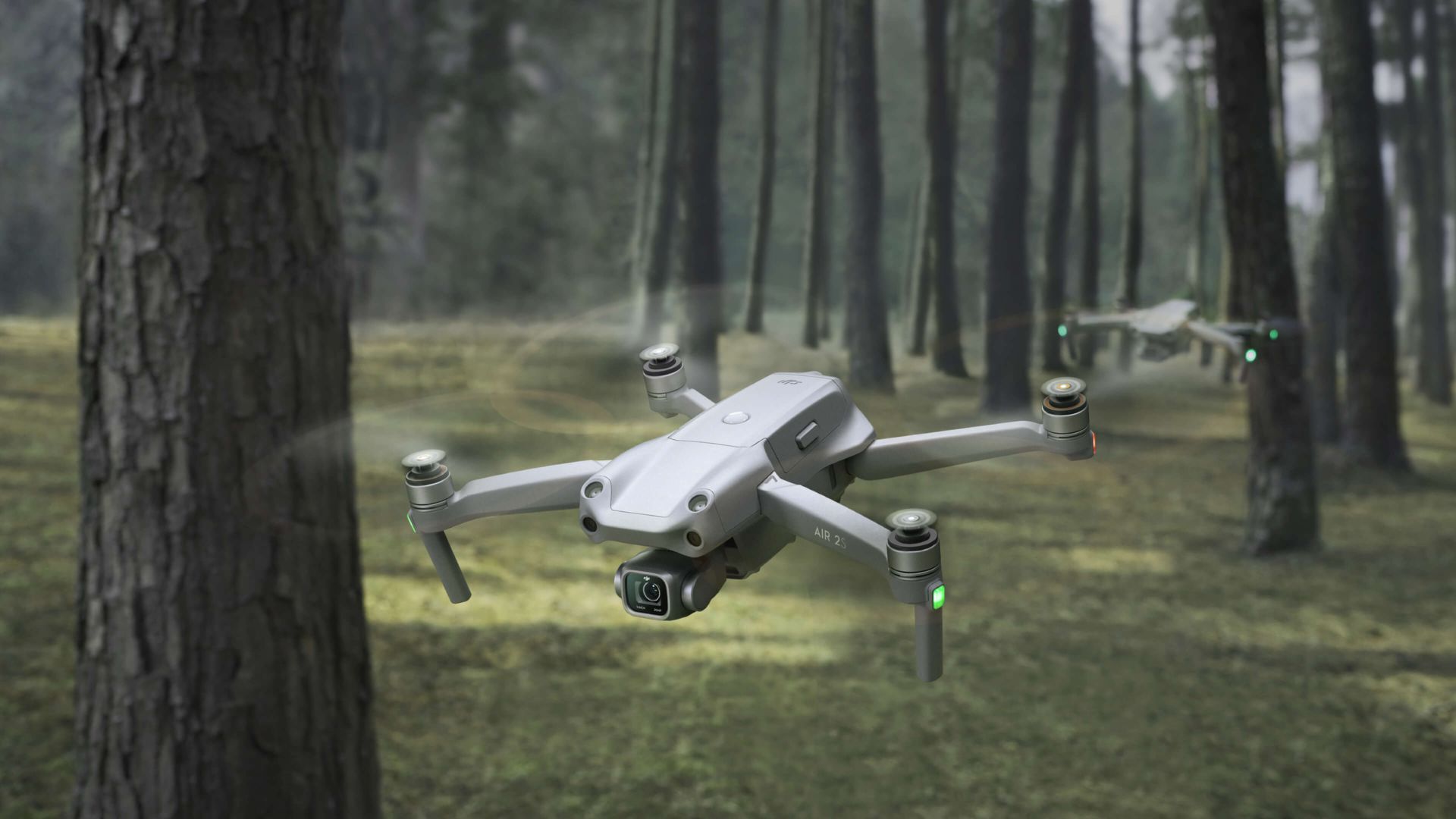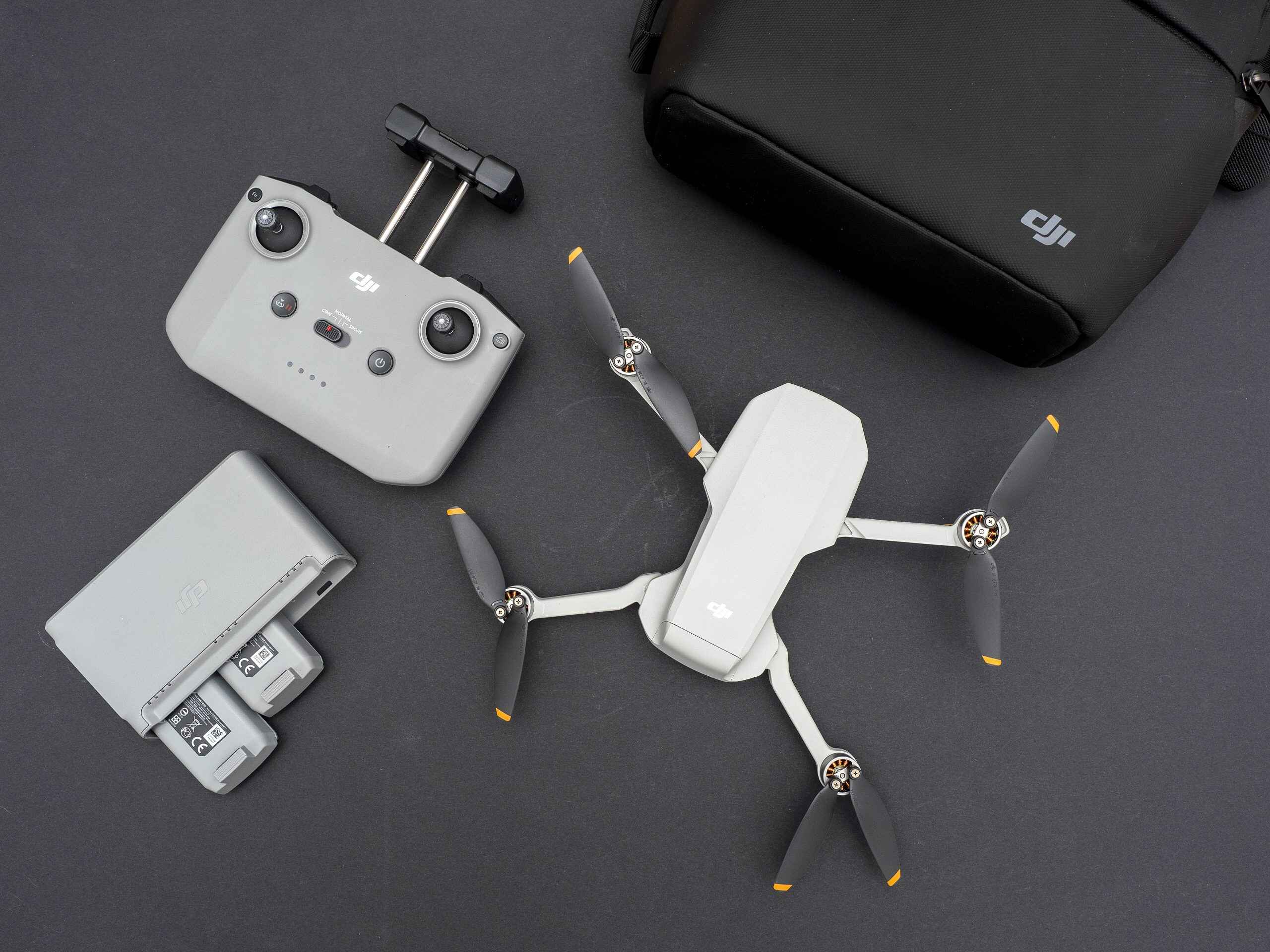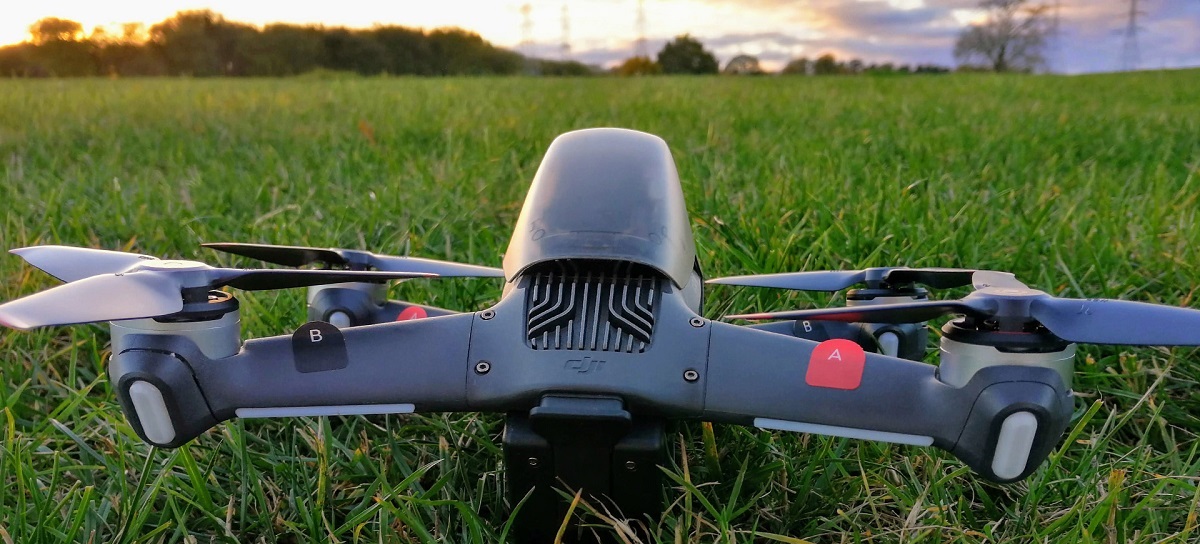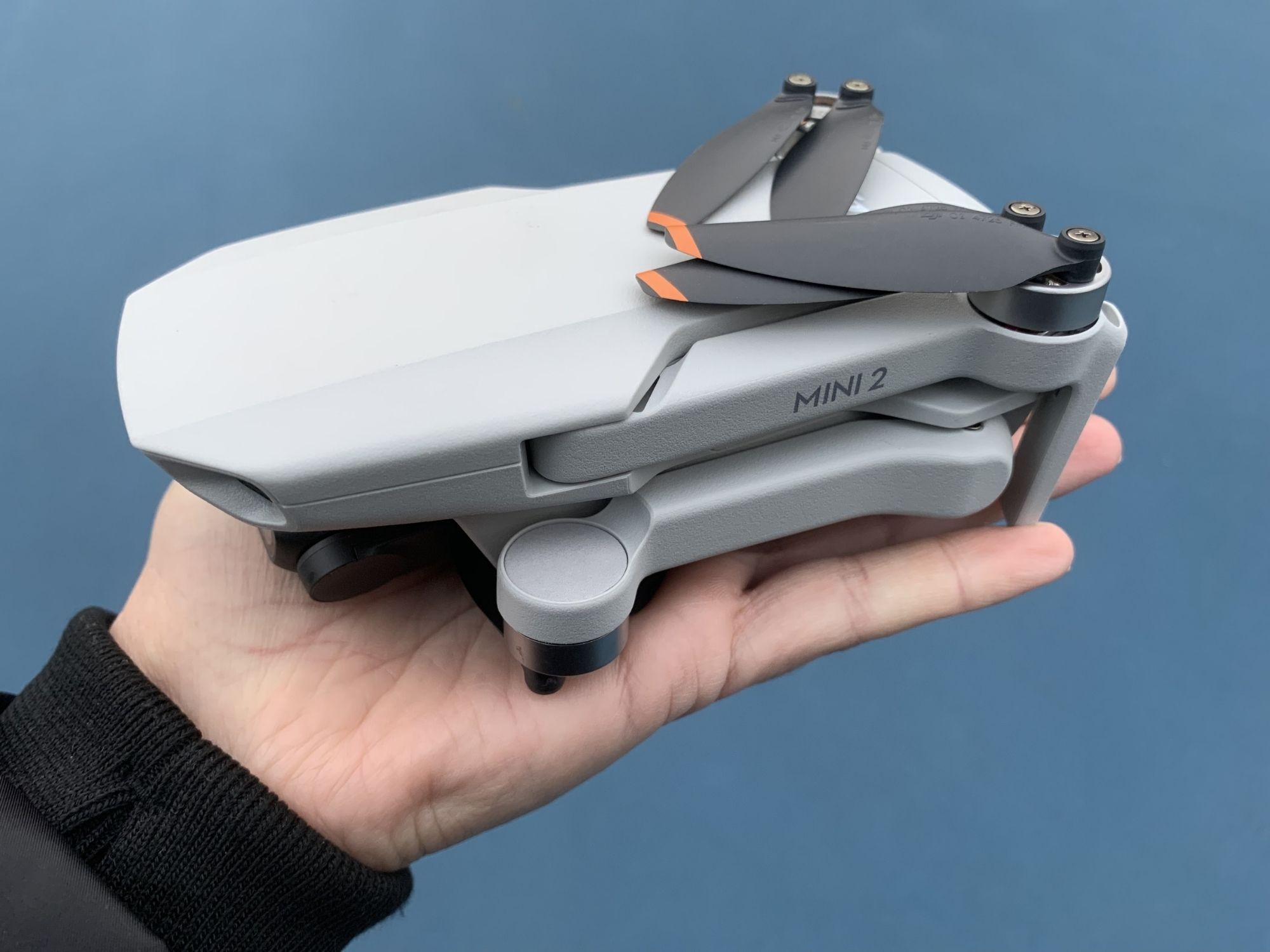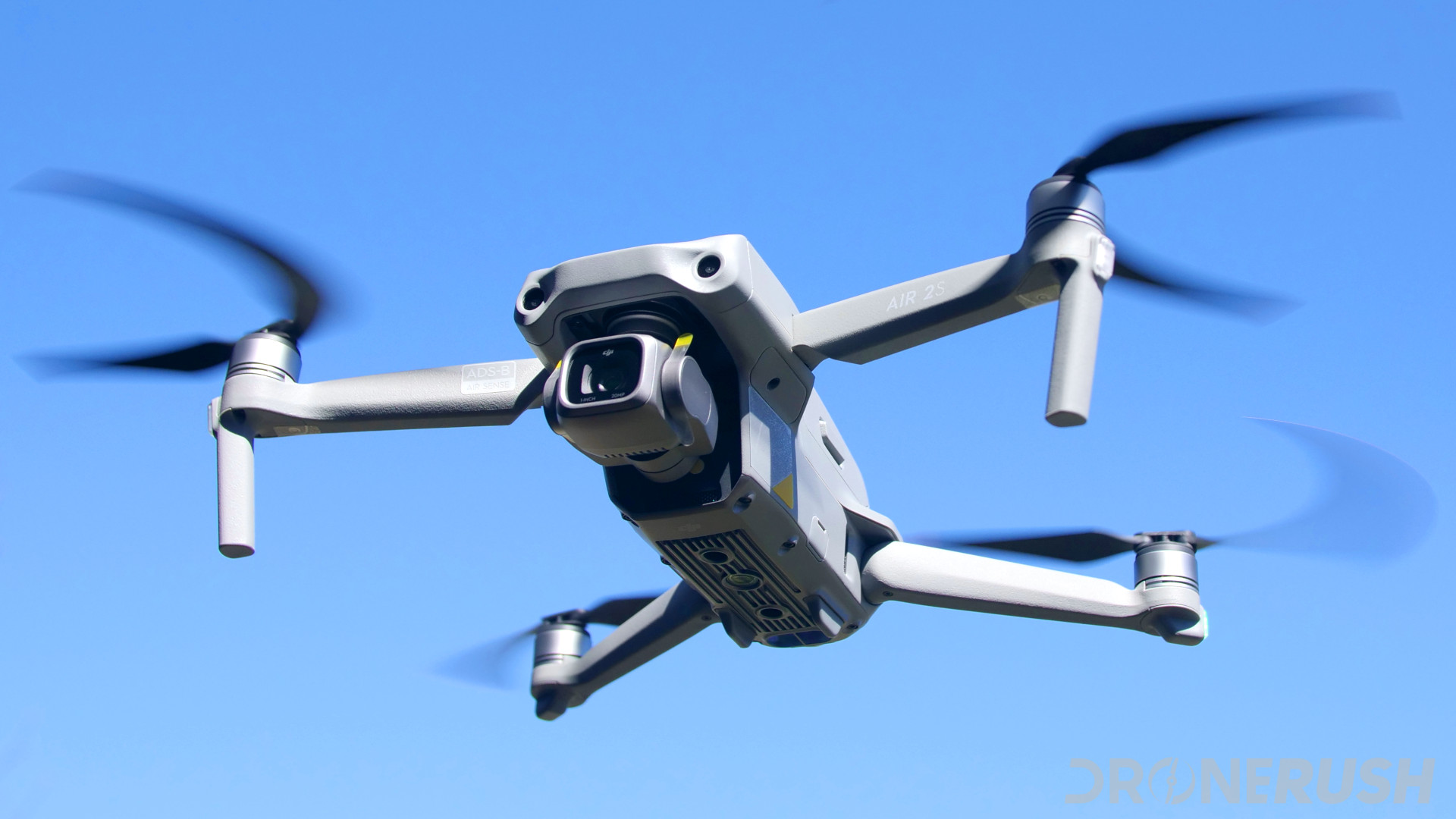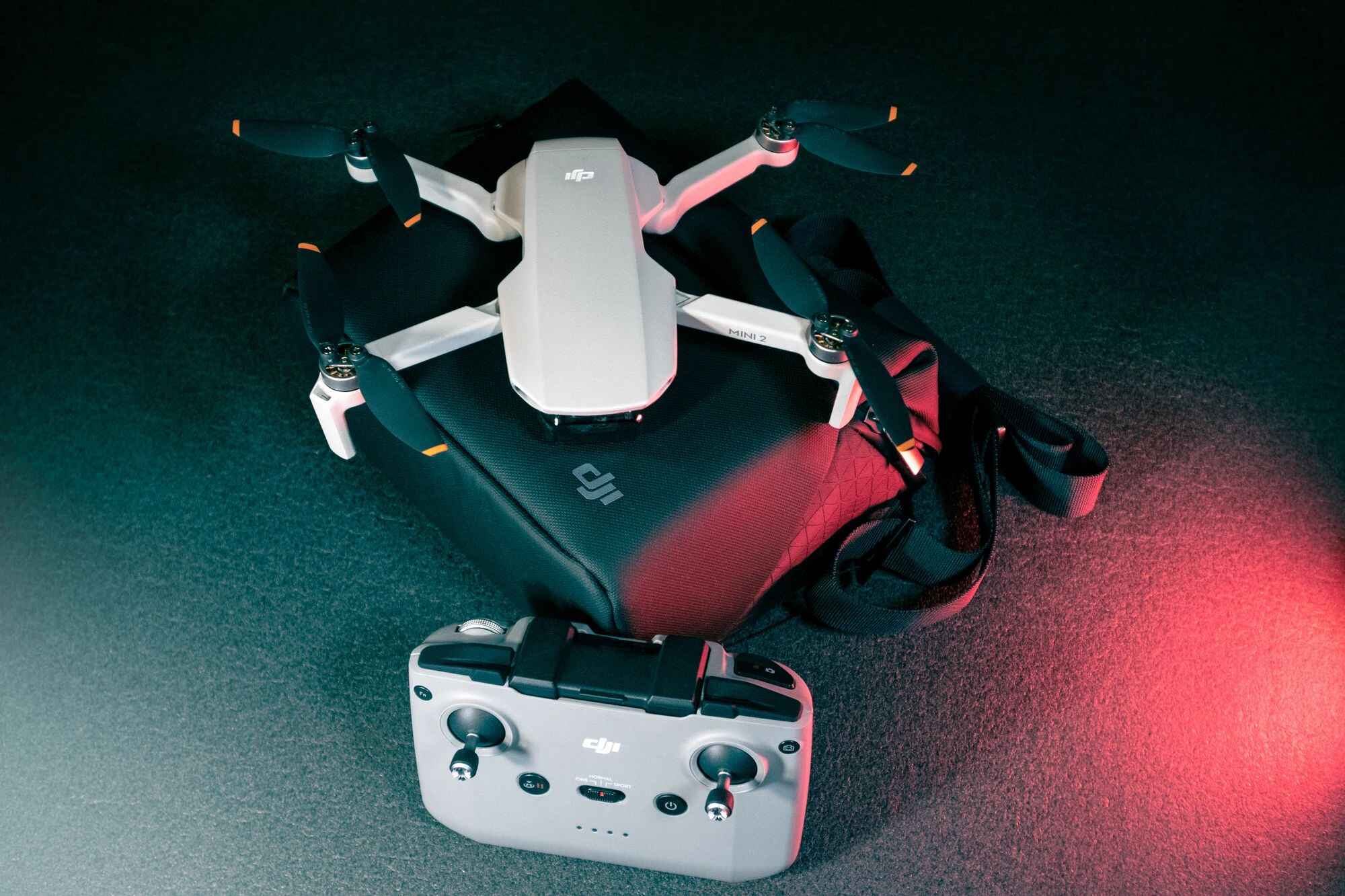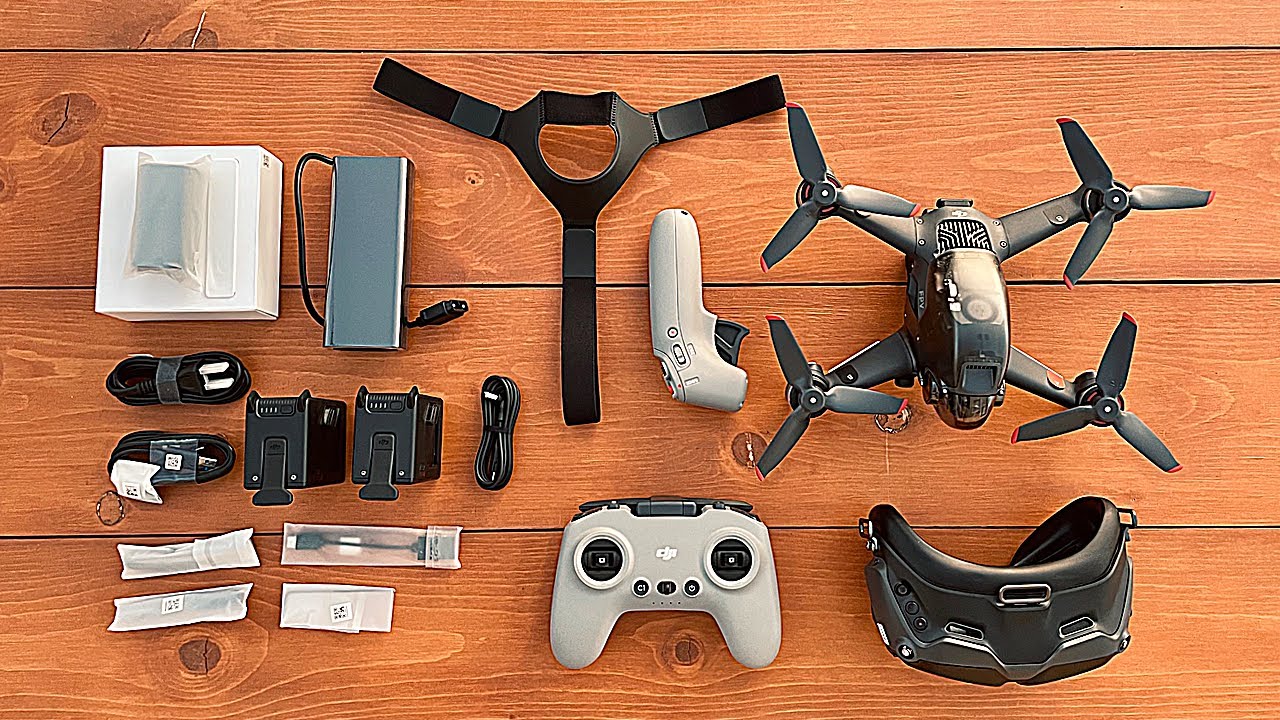Introduction
Welcome to the exciting world of DJI drones! Whether you’re a hobbyist, an aerial photographer, or a professional filmmaker, flying a DJI drone can provide you with exhilarating experiences and incredible views from above. In this article, we will guide you through the process of flying a DJI drone, from choosing the right model to mastering the flight modes and capturing amazing aerial footage.
DJI is a well-known brand in the drone industry, renowned for its advanced technology, ease of use, and robust features. With a wide range of drones available, it’s important to choose the one that suits your needs and skill level. We’ll help you navigate through the different options and find the perfect fit for you.
Before taking to the skies, it’s crucial to become familiar with your DJI drone. Understanding its features, controls, and capabilities will not only ensure a safe flight but also allow you to take full advantage of its functionalities. We’ll walk you through the key aspects of your DJI drone so that you can handle it with confidence.
Safety should always be a top priority when flying a DJI drone. It’s essential to follow safety precautions and abide by the legal requirements set by your local aviation authorities. We’ll provide you with the necessary information to ensure a responsible and legal flight, so you can enjoy your aerial adventures without any hassle.
Before each flight, it’s important to go through a pre-flight checklist to ensure that your drone is in optimal condition and ready to take off. We’ll share valuable tips and steps to help you perform a thorough pre-flight check, minimizing the risk of any technical issues during your flight.
The controller is the heart of the drone operation, and understanding its functions and features is key to controlling your drone effectively. We’ll guide you through the buttons, joysticks, and settings on the DJI controller, empowering you to navigate the skies confidently.
Once you have a good grasp of the basic flying techniques, it’s time to explore the various flight modes available on your DJI drone. These modes enhance your piloting experience and allow you to capture incredible shots and videos. We’ll delve into each flight mode and explain how to utilize them effectively.
One of the most thrilling aspects of flying a DJI drone is the ability to capture stunning aerial footage. We’ll provide you with tips and techniques to help you capture amazing shots and videos, elevating your aerial photography or filmmaking game to new heights.
Like any technology, drones can sometimes encounter issues or require maintenance. We’ll cover troubleshooting tips for common problems and provide guidance on regular maintenance tasks to keep your DJI drone in optimal condition.
Lastly, we’ll point you towards additional resources and learning materials to further enhance your knowledge and proficiency in flying DJI drones. These resources include online tutorials, forums, and other valuable platforms where you can connect with fellow drone enthusiasts.
So, whether you’re a beginner or a seasoned drone pilot, get ready to embark on an incredible journey with your DJI drone. Let’s dive in and discover the exhilarating world of aerial exploration and creativity!
Choosing the Right DJI Drone for You
When it comes to choosing a DJI drone, the options can be overwhelming. With a wide range of models available, each with its own unique features and capabilities, it’s important to select the one that best suits your needs and skill level.
Consider your primary purpose for using a drone. Are you interested in aerial photography, videography, or simply want to have fun flying? This will help narrow down your options and determine which features are essential for your needs.
If you’re a beginner, the DJI Mini 2 is a great entry-level drone. It’s compact, lightweight, and easy to fly, making it perfect for those who are new to drone piloting. Despite its small size, it still offers impressive quality and features, including a 4K camera and intelligent flight modes.
For enthusiasts and professionals looking for more advanced features, the DJI Mavic Air 2 is a popular choice. With its powerful camera, obstacle avoidance system, and long flight time, it offers a wide range of capabilities for capturing stunning aerial footage.
If you’re interested in professional-grade aerial photography or filmmaking, the DJI Phantom 4 Pro V2.0 or the DJI Inspire 2 are excellent options. These drones offer high-quality cameras, advanced flight capabilities, and interchangeable lenses, allowing you to capture breathtaking images and videos with utmost precision and control.
Consider the size and portability of the drone as well. If you plan on traveling with your drone or need a compact option for easy storage, models like the DJI Mavic Mini or DJI Mavic Pro are worth considering. These drones can easily fold up and fit into a small bag, making them convenient for on-the-go adventures.
Another crucial factor to consider is your budget. DJI drones range from budget-friendly options to high-end professional models. Determine how much you’re willing to invest in a drone and find the model that offers the best value for your money.
Lastly, it’s important to research and read reviews from other drone enthusiasts. This will give you insights into the pros and cons of each model, helping you make an informed decision. Online forums and communities dedicated to drones are valuable resources for gathering information and seeking advice from experienced pilots.
Remember, choosing the right DJI drone is a personal decision based on your specific needs and preferences. By considering factors such as your skill level, intended use, size, budget, and user reviews, you can find the perfect drone that will take your aerial adventures to new heights.
Getting Familiar with Your DJI Drone
Before taking your DJI drone on its first flight, it’s crucial to become familiar with its features, controls, and overall operation. This understanding will not only ensure a safe and successful flight but also enable you to maximize the capabilities of your drone.
Start by carefully reading the user manual that comes with your DJI drone. The manual provides valuable information about the drone’s specifications, safety guidelines, and operating procedures. It also highlights the location and function of the essential components, such as the battery, propellers, camera, and sensors.
Next, familiarize yourself with the DJI mobile app or software that connects to your drone. This app or software allows you to control and monitor the drone’s flight, access settings, view live video feed, and even edit photos and videos. Take the time to explore its features and settings, as they can enhance your flying experience and help you capture stunning footage.
When handling the drone, always ensure that the propellers are removed or locked in place to prevent accidental injuries. Be gentle while attaching or detaching the propellers, ensuring they are securely fastened. It’s also important to regularly check the condition of the propellers for any signs of wear or damage.
Understanding the battery and its charging process is essential. DJI drones typically use intelligent flight batteries that require proper care and maintenance. Follow the instructions in the user manual to charge the battery correctly and avoid overcharging or using damaged batteries. Familiarize yourself with the battery life indicators to prevent any unexpected mid-flight battery depletions.
Take the time to explore the drone’s camera and adjust its settings according to your preferences. Experiment with different resolutions, frame rates, and shooting modes to capture photos and videos that suit your needs. Additionally, familiarize yourself with the gimbal controls to ensure stable footage during flight.
Once you’re comfortable with the controls and settings, it’s recommended to perform a series of test flights in open and obstacle-free areas. Start with basic maneuvers such as ascending, descending, hovering, and flying in straight lines. Gradually increase your piloting skills and confidence by practicing more advanced movements like banking, turning, and flying in different directions.
Prioritize safety throughout your learning process. Always fly in compliance with local regulations and respect the privacy of others. Avoid flying in restricted areas or near airports, and maintain a safe distance from people, buildings, and vehicles.
By taking the time to familiarize yourself with your DJI drone, its features, and controls, you’ll be well-prepared for your first flight and be able to operate it more confidently. Remember, practice makes perfect, so continue honing your skills and exploring the capabilities of your DJI drone to capture stunning aerial photographs and videos.
Safety Precautions and Legal Requirements
Safety is paramount when it comes to flying a DJI drone. Before taking to the skies, it’s crucial to familiarize yourself with the safety precautions and legal requirements in your area. By following these guidelines, you’ll ensure a responsible and incident-free flight.
First and foremost, familiarize yourself with the local regulations governing the use of drones. Different countries and regions have specific laws regarding drone flights, including airspace restrictions, altitude limits, and flight permits. Check with your local aviation authority to understand the rules and requirements applicable to your location.
Ensure that you have the necessary permits or licenses, if required, before flying in restricted areas or for commercial purposes. Some jurisdictions may also have specific regulations for recreational drone flights, such as maintaining a line of sight with the drone or prohibiting flights near certain landmarks or sensitive locations.
Prior to each flight, check the weather conditions. Avoid flying in strong winds, rain, or other adverse weather conditions that may affect the stability and control of your drone. Optimal weather conditions not only ensure a smooth flight but also contribute to the safety of both your drone and any nearby individuals.
Perform a thorough pre-flight checklist before every flight to ensure that your drone is in proper working condition. Inspect the propellers for any signs of damage or wear, check the battery level, and verify that all components are securely attached. Additionally, confirm that the GPS signal is strong and that the firmware of your drone and controller are up to date.
Always maintain visual line of sight with your drone during the flight. This means keeping the drone within your direct sight at all times, without relying solely on the live video feed from the drone’s camera. Maintaining visual contact allows you to respond quickly to any potential hazards or unexpected situations.
Respect the privacy of others and avoid flying your drone over private property without permission. Be mindful of your surroundings, especially in crowded areas, and maintain a safe distance from people, vehicles, and buildings to prevent any accidents or disturbances.
Be aware of any “no-fly zones” or restricted areas in your vicinity. These could include airports, military installations, or other sensitive areas. Utilize DJI’s geofencing feature or third-party tools to identify and comply with these restricted zones to prevent unauthorized access and potential legal consequences.
Consider investing in liability insurance for your drone. While not mandatory in all regions, drone insurance provides coverage in the event of accidents, damages, or injury caused by your drone. It offers financial protection and peace of mind while flying.
Lastly, continuously educate yourself on safe flying practices and stay updated with the latest regulations and guidelines. Join online drone communities, attend workshops or training sessions, and seek advice from experienced pilots. Engaging in ongoing learning will enhance your piloting skills and ensure that you remain informed about any changes in regulations.
By adhering to safety precautions and legal requirements, you’ll not only protect yourself and others but also contribute to the positive image of drone pilots. Remember, responsible drone flying promotes safety, privacy, and enjoyment for all.
Pre-flight Checklist
Performing a thorough pre-flight checklist is essential before each drone flight. This checklist ensures that your DJI drone is in optimal condition and ready to take to the skies. By following this checklist, you’ll minimize the risk of any technical issues during your flight and ensure a safe and successful operation.
1. Inspect the drone:
- Check for any physical damage or wear on the drone’s body, propellers, and landing gear. Replace any damaged parts before flying.
- Ensure that all components, such as the camera, gimbal, and sensors, are securely attached and functioning properly.
2. Check the battery:
- Make sure the battery is fully charged before the flight. Check the battery indicators and ensure it has enough power to complete your intended flight duration.
- Inspect the battery for any signs of damage or swelling. Never use a damaged or swollen battery.
3. Prepare the remote controller:
- Check the battery level of the remote controller and ensure it’s fully charged or has enough power for the duration of your flight.
- Ensure that the remote controller and the drone are properly synced and connected.
4. Verify GPS signal:
- Allow the drone to establish a strong GPS signal before taking off. This ensures better flight stability and accurate positioning information.
- Avoid flying in areas with weak GPS signal, as it can affect the drone’s flight performance.
5. Check the firmware and software:
- Ensure that both the drone and the remote controller have the latest firmware updates installed.
- Verify that the DJI mobile app or software you’re using is up to date and compatible with your drone model.
6. Clear the flight area:
- Choose a suitable location for takeoff and landing that is free from obstacles and people.
- Double-check for any overhead power lines, trees, or other structures that may interfere with the flight path.
7. Plan the flight:
- Consider the intended flight route and the specific shots or videos you want to capture. Familiarize yourself with the area and potential obstacles.
- Check for any restrictions or no-fly zones in the vicinity and plan your flight accordingly.
8. Identify emergency landing spots:
- Identify and mark potential emergency landing spots in case of unexpected issues or loss of control.
- Ensure that the emergency landing spots are clear from obstacles and can easily be accessed if needed.
Remember, going through this pre-flight checklist is crucial for the safety and reliability of your DJI drone. By conducting this routine check before every flight, you can have peace of mind and enjoy a smooth and trouble-free flight experience.
Understanding the Controller
The controller is the primary tool that allows you to command and control your DJI drone. Understanding its functions and features is essential to navigate and operate your drone effectively. In this section, we will help you get acquainted with the various components and controls of the DJI controller.
1. Powering on the controller:
- Ensure that both the drone and the controller are turned off before starting.
- Press and hold the power button on the controller until the LED indicators light up, indicating that it’s powered on.
2. Connecting to the drone:
- After powering on the controller, turn on the drone and wait for the two devices to establish a connection.
- Verify the successful connection by checking the status indicators on both the controller and the drone.
3. Joysticks:
- The joysticks on the controller are used to maneuver and control the drone’s flight. The left joystick controls throttle and yaw, while the right joystick controls pitch and roll.
- Practice manipulating the joysticks to gain familiarity with their movements and responsiveness. Smooth and precise joystick control is crucial for achieving stable and controlled flights.
4. Return-to-Home (RTH) Button:
- The Return-to-Home button is a safety feature that instructs the drone to automatically return to its takeoff location.
- Make sure to set the RTH altitude in the drone settings to avoid obstacles during the return flight.
- It’s important to note that the RTH feature depends on the GPS signal and should only be activated when necessary or in case of emergencies.
5. Camera Controls:
- Many DJI controllers have dedicated buttons or dials for controlling the camera features and settings.
- These controls allow you to capture photos, start/stop video recording, adjust camera settings like exposure and white balance, and even tilt or pan the gimbal for smooth camera movements.
6. LCD Display:
- The controller often features an LCD display that provides important flight information such as battery levels, GPS signal strength, flight mode, and other telemetry data.
- Regularly monitor the display to stay informed about the status of your drone during the flight.
7. Intelligent Flight Modes:
- DJI controllers offer a range of intelligent flight modes that enhance the drone’s capabilities and allow you to capture unique shots.
- Some common intelligent flight modes include ActiveTrack, Waypoints, Follow Me, and Point of Interest. Familiarize yourself with these modes and the specific controls or gestures required to activate them.
8. Controller Settings:
- Explore the controller settings in the DJI mobile app or software to customize the controls, sensitivity, and other preferences to suit your flying style.
- Take the time to understand and adjust these settings according to your comfort and piloting needs.
Take the opportunity to practice with the controller in a safe and open area before attempting more complex flights or maneuvers. Developing a solid understanding of the controller’s functions and becoming comfortable with its operation will enable you to confidently take control of your DJI drone and navigate the skies with precision.
Basic Flying Techniques
Mastering the basic flying techniques is essential for piloting your DJI drone with precision and confidence. In this section, we will cover the fundamental techniques that will help you navigate the skies smoothly and capture stunning aerial footage.
1. Takeoff and Landing:
- Choose a suitable takeoff and landing area that is free from obstacles and provides ample space for a safe departure and return.
- Gently push the throttle stick upward to slowly increase the drone’s altitude for takeoff.
- To land, locate a clear spot and slowly lower the drone’s altitude by pulling down on the throttle stick.
2. Hovering:
- Once the drone is in the air, practice hovering at a fixed altitude and maintaining a steady position.
- Use slight adjustments on the throttle and joystick controls to keep the drone stable.
3. Steering and Directional Control:
- Use the joystick controls to steer the drone in different directions. Pushing the joystick forward or backward controls the pitch, while moving it left or right controls the roll.
- Practice flying in straight lines, making smooth turns, and maintaining a consistent flight path.
4. Ascending and Descending:
- Use the throttle control to ascend or descend the drone. Pushing the throttle stick upward increases the altitude, while pulling it downward reduces the altitude.
- Practice ascending and descending at different rates to gain control over the drone’s vertical movements.
5. Banking and Turning:
- Banking refers to tilting the drone to the left or right while keeping the flight path stable.
- To initiate a turn, bank the drone in the desired direction and smoothly adjust the pitch and roll controls to execute a smooth and controlled turn.
6. Practice Obstacle Avoidance:
- Set up a simple obstacle course using cones or markers to practice maneuvering your drone around obstacles.
- Gradually increase the difficulty of the course as you become more comfortable with the drone’s agility.
7. Fly in Different Weather Conditions:
- As you gain experience, try flying your drone in various weather conditions such as light winds or different times of the day.
- Learning to adapt and adjust your piloting skills in different conditions will enhance your versatility as a drone pilot.
8. Maintain a Proper Distance:
- Always maintain a safe distance between the drone and any people, buildings, or other objects.
- Start with a conservative distance until you gain confidence and a better understanding of your drone’s dimensions and flight characteristics.
Remember, practice is key to mastering these basic flying techniques. Spend time regularly honing your skills and building your confidence. As you become more proficient, you can gradually progress to more advanced maneuvers and flight modes.
Mastering the Flight Modes
DJI drones offer a variety of flight modes that can greatly enhance your piloting experience and help you capture unique and creative shots. Mastering these flight modes will allow you to maximize the potential of your DJI drone and take your aerial photography and videography to new heights. In this section, we will explore some popular flight modes and provide tips on how to use them effectively.
1. ActiveTrack:
- ActiveTrack allows your drone to automatically track and follow a subject, keeping it in the frame as it moves.
- To use ActiveTrack, select the subject on the DJI mobile app or software and let the drone do the rest. This mode is perfect for capturing dynamic shots of moving subjects like people, cars, or animals.
- Practice using ActiveTrack in an open area with clear visibility to ensure smooth tracking and avoid obstacles.
2. Waypoints:
- Waypoints mode allows you to pre-plan and customize a flight path for your drone. You can set specific GPS coordinates and altitude for the drone to follow.
- Utilize the DJI mobile app or software to set waypoints and adjust the speed and gimbal angles for each point.
- This mode is ideal for creating cinematic and precise aerial shots, as you can focus on capturing the scenery while the drone autonomously follows the predetermined path.
3. Point of Interest (POI):
- In POI mode, you can select a point of interest, and the drone will automatically circle around it while keeping the subject in the center of the frame.
- Adjust the radius and speed of the circle to achieve different effects and capture captivating aerial footage of landmarks, buildings, or natural features.
- Practice POI mode in open areas with clear visibility to avoid collisions or losing sight of the subject.
4. Follow Me:
- Follow Me mode allows the drone to track and follow a moving subject, keeping it in the frame at all times.
- Set the drone to follow a specific person or object, and it will maintain a constant distance and altitude from the subject as it moves.
- This mode is perfect for outdoor activities such as hiking, biking, or capturing action sports.
5. Cinematic Mode:
- Cinematic mode is designed to slow down the drone’s movements and create smoother and more dramatic footage.
- Adjust the sensitivity and speed settings in the DJI mobile app or software to achieve the desired cinematic effect.
- This mode is great for capturing sweeping landscape shots, revealing the grandeur of the scenery.
Ensure that you thoroughly understand the specific controls and requirements of each flight mode before using them. Practice in open areas with safety as a top priority to avoid accidents and ensure optimal results.
Experiment with these flight modes and unleash your creativity to capture stunning and dynamic shots. Understanding and mastering these modes will elevate your aerial photography and videography to the next level, allowing you to tell captivating stories from a unique perspective.
Capturing Amazing Aerial Footage
One of the most thrilling aspects of flying a DJI drone is the ability to capture breathtaking aerial footage. Whether you’re an aspiring aerial photographer or simply want to document your adventures from a unique perspective, these tips will help you capture amazing shots and videos with your DJI drone.
1. Plan your shots:
- Before taking off, visualize the shots you want to capture. Consider the composition, angles, and lighting to tell a compelling visual story.
- Scout and explore the area, identify landmarks or interesting features that you can incorporate into your shots.
2. Utilize the rule of thirds:
- Compose your shots using the rule of thirds. Imagine dividing the frame into a 3×3 grid and place key subjects or points of interest along these intersecting lines to create visually balanced and engaging shots.
- Experiment with different perspectives, such as low-angle or high-angle shots, to add depth and variety to your footage.
3. Play with movement:
- Utilize the drone’s flight capabilities to add movement and dynamism to your footage.
- Experiment with smooth and controlled movements like ascending, descending, and flying in different directions to create fluid and cinematic shots.
- Combine different directions and movements to add more interest and creativity to your footage.
4. Adjust camera settings:
- Know your drone’s camera settings and adjust them according to the lighting conditions and desired outcome.
- Adjust the exposure, white balance, and color profiles to achieve the desired look and feel of your footage.
- Shoot in RAW or D-Log format to have more flexibility in post-processing and color grading.
5. Experiment with intervals and time-lapses:
- Use your drone’s interval shooting feature to capture time-lapse sequences, such as the movement of clouds, the changing colors of a sunset, or the hustle and bustle of a city.
- Adjust the interval time and duration to capture the desired effect.
6. Combine manual and automated shots:
- While using the intelligent flight modes can create stunning shots, don’t rely solely on automation. Mix it up with manual control to preserve your creative input and capture unique perspectives.
7. Enhance your shots with post-processing:
- After capturing footage, refine your shots using post-processing software.
- Adjust the exposure, contrast, and color grading to enhance the overall look of your footage.
- Crop or stabilize your shots if needed to refine the composition.
Remember to always fly responsibly and considerate of your surroundings. Respect privacy, adhere to local regulations, and fly in accordance with safety guidelines.
By following these tips and continuously practicing, you’ll be able to capture stunning aerial footage that showcases the beauty and uniqueness of your chosen locations. Let your creativity soar and discover the endless possibilities of aerial photography and videography with your DJI drone.
Troubleshooting and Maintenance Tips
Like any electronic device, DJI drones may encounter occasional issues or require regular maintenance to ensure optimal performance and longevity. In this section, we will provide you with some troubleshooting and maintenance tips to keep your DJI drone in excellent condition.
1. Calibrate the compass:
- If your drone is experiencing inconsistent or inaccurate flight behavior, calibrating the compass can often resolve the issue.
- Follow the manufacturer’s instructions to perform a compass calibration in a open outdoor area, away from any magnetic interference.
2. Check for firmware updates:
- Regularly check for firmware updates for both your DJI drone and the controller.
- Updating to the latest firmware ensures improved performance, added features, and bug fixes.
3. Keep the drone clean:
- Regularly clean the drone to remove dirt, dust, and debris that may accumulate during flights.
- Use a soft brush or air blower to gently clean the motors, propellers, and the camera lens.
4. Inspect and maintain the propellers:
- Regularly inspect the propellers for any signs of wear, damage, or deformation.
- Replace any damaged or worn propellers to ensure safe and stable flights.
5. Monitor and maintain battery health:
- Pay attention to the battery health and performance of your drone.
- Avoid over-discharging or overcharging the batteries, as this can affect their lifespan and performance.
- Store your batteries in a cool and dry place to prevent degradation caused by extreme temperatures.
6. Address gimbal issues:
- If you notice any issues with the gimbal, such as instability or drift, perform a gimbal calibration using the DJI app or software.
- Ensure that the gimbal is properly balanced and level to maintain smooth camera movements during flight.
7. Avoid flying in extreme weather conditions:
- Extreme cold or hot temperatures can affect the performance and lifespan of your drone and its batteries.
- Avoid flying in adverse weather conditions, such as heavy rain, strong winds, or snowstorms, to prevent potential damage to your drone.
8. Keep spare parts and accessories on hand:
- Having spare propellers, batteries, and cables can be helpful in case of emergencies or if any components need replacing.
9. Check for software and app updates:
- Regularly check for updates to the DJI app or software you use to control your drone.
- Updating the software ensures compatibility, stability, and access to new features.
If you encounter persistent issues with your DJI drone that cannot be resolved through troubleshooting, it is recommended to reach out to DJI’s customer support or authorized service centers for assistance.
By following these maintenance tips and promptly addressing any issues, you’ll ensure that your DJI drone remains in excellent working condition, allowing you to enjoy many more flights and capture stunning aerial footage.
Resources and Further Learning
As a DJI drone pilot, there are several resources and avenues for further learning that can help you enhance your skills, stay updated with the latest trends and advancements, and connect with a community of fellow enthusiasts. In this section, we will highlight some valuable resources for you to explore.
1. DJI Official Website and Documentation:
- Visit the official DJI website for product information, manuals, and firmware updates for your specific drone model.
- Read the documentation provided by DJI for a comprehensive understanding of your drone’s features, flight modes, and safety guidelines.
2. Online Tutorials and Courses:
- YouTube and other video platforms host numerous tutorials and guides specific to DJI drones.
- Look for reputable creators and professional pilots who share their expertise and tips for flying and capturing amazing footage with DJI drones.
- Consider enrolling in online courses or workshops that provide in-depth learning opportunities and practical insights.
3. DJI Official Forums and Communities:
- Join the official DJI forums to connect with a community of DJI drone pilots worldwide.
- Participate in discussions, ask questions, and share your experiences with other enthusiasts.
- These forums are an excellent platform to seek advice, troubleshoot issues, and gain insights from experienced pilots.
4. Social Media:
- Follow DJI and DJI drone communities on social media platforms like Facebook, Instagram, and Twitter.
- Stay updated with the latest news, product releases, and tips shared by DJI and fellow enthusiasts.
5. Drone Film Festivals and Contests:
- Explore drone film festivals and contests to witness the creativity and talent of drone filmmakers from around the globe.
- Participate in these events to challenge yourself, showcase your skills, and learn from other drone enthusiasts.
6. Books and Publications:
- Search for books or publications that delve into the art and techniques of aerial photography and videography.
- These resources can provide in-depth knowledge and insights into composition, storytelling, and advanced piloting techniques.
Remember, learning is a continuous process, and practicing regularly will help you refine your skills and explore the full potential of your DJI drone. Embrace the journey of discovery and continue pushing the boundaries of what you can achieve as a drone pilot.







